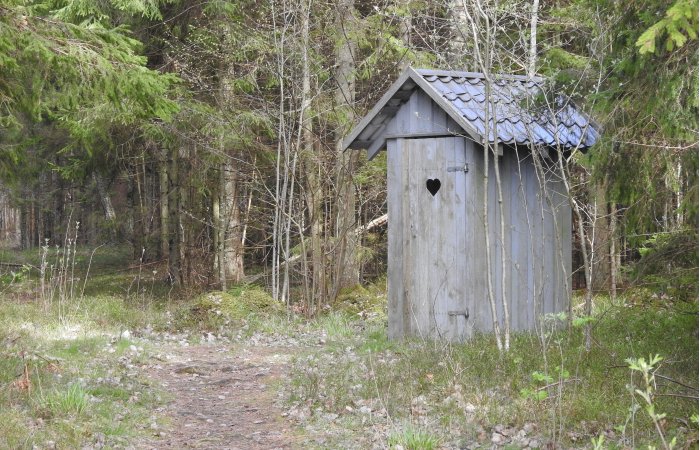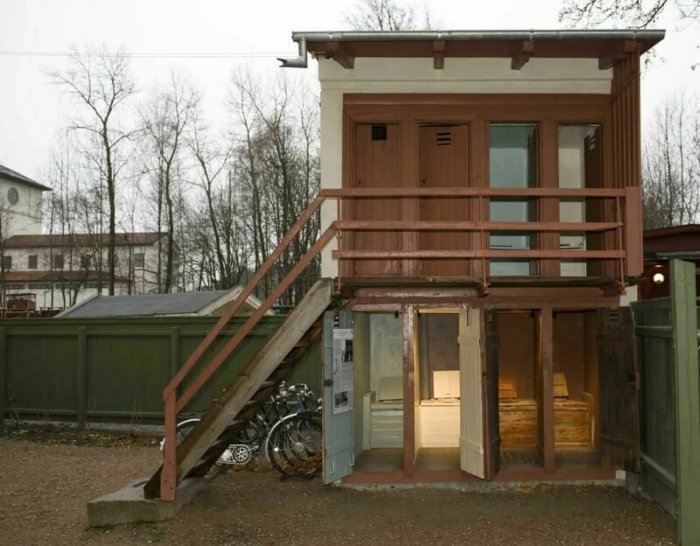How Did People Go To The Toilet In The Past Before The Invention Of The Flush Toilet?
Jan Bartek - AncientPages.com - Everyone goes to the toilet, but it's not a subject we often discuss. Have you ever wondered how people in the past went to the toilet before the flush toilet was invented? Who would empty the toilets in the cities? Did boys and girls really go to the bathroom together? Didn't people wear underwear?
Credit: Adobe Stock - Sintija
These may sound like odd questions to some, but the answers are of historical value. In an interview with Science in Norway, Ragnhild Hutchison, a historian and researcher at OsloMet revealed what many wondered, but few dared to ask: How did people relieve themselves in the past?
No Toilets In The Countryside
One would suspect it was probably easier for those who lived in the countryside, where you are surrounded by nature and not building blocks.
“They didn't have toilets in the countryside, so instead they had a designated spot. You would go there to pee and poo,” Hutchison says. “Preferably near the water or by a stream. And ideally, the current should flow downward, so they could collect drinking water higher up in the stream.”
This means people couldn't urinate where they wanted. They had to do it at the right spot near the stream so that water would not be contaminated with urine and feces, and the whole village would be sick.
Long ago, people in Norway did not drink water because it made them sick. Instead, they drank whey. It contained so much alcohol that the bacteria died. Whey is what remains after making cheese from milk.
Also, as "outdoor toilets did not exist on Norwegian farms until the 19th century. Only wealthy people had outdoor toilets before that.
“Previously, they didn't need it; they could simply go outside and pee. They would just go outdoors or behind the barn to relieve themselves,” Hutchison says.
Some farms had a pole against the house wall that they could sit on to go to the toilet.
“They could sit there, dangling their legs with their bottoms in the air,” Hutchison says.
“Outdoor toilets with multiple seats that could accommodate several people existed. Did they go to the toilet at the same time?”
“Yes! I’m sure you’ve heard that girls go to the bathroom together? Here, we have both girls and boys who went to the bathroom together. And they would sit there and have a pleasant chat with each other,” she says.
Hutchison adds that it was probably more practical to have multiple seats.
“There were many people, children, and servants, and everyone needed to use the toilet. It was more convenient to empty if all the waste ended up in one place rather than in several separate outdoor toilets,” she says.
People did Not Wear Underwear?
It may sound a bit shocking, but no, most people did not wear underwater in the past. Also, in most cases, they did not wipe themselves with anything. On occasion, they may have used moss or leaves when defecating, but nothing when they urinated.
What About Toilets In Cities?
People who lived in cities used a communal outdoor toilet that was emptied by a nightman.
As explained by Science in Norway, "the nightman would empty the outdoor toilets and remove dead animals at night. Being a nightman was not a job one could choose, but rather a job people received instead of getting the death penalty.
Oslo's outdoor toilets would have overflowed if it weren’t for the nightman. Even so, the nightman was not considered important, and they had very low status.
A communal outdoor toilet for an apartment building in Oslo. (Photo credit: Anne-Lise Reinsfelt / The Norwegian Museum of Cultural History)
In the 19th century, ‘klaskedoen’ was introduced in Norway, which can perhaps be translated to a 'splashtoilet'. It was a type of outdoor toilet used in apartment buildings with multiple floors.
Since they did not have running water yet, there was a pipe that ran through all the toilets in the building. That way, you could hear the water splashing beneath you when your upstairs neighbour used the toilet, hence the name ‘klaske’, or splash.
In 1899, it was prohibited to build these types of toilets in new houses, and efforts were made to phase out the system where waste traveled down several floors.
The authorities suggested portable buckets as a replacement. Therefore, sanitation workers had to carry toilet buckets down the staircases.
In 1973, the Oslo Health Council decided to close all ‘klaskedoer’, but the last one was not closed until 1985.
One can say that people in the past coped without complaining and survived without many things we today take for granted, like the flush toilet, for example.
Written by Jan Bartek - AncientPages.com Staff Writer






















